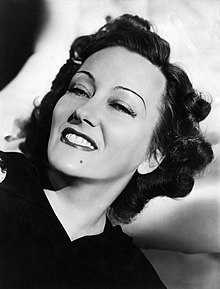The 1920s Portal
Silent films were popular in this decade, with the highest-grossing film of this decade being either the American silent epic adventure-drama film Ben-Hur: A Tale of the Christ or the American silent war drama film The Big Parade, depending on the metrics used. Sinclair Lewis was a popular author in the United States in the 1920s, with his books Main Street and Elmer Gantry becoming best-sellers. Best-selling books outside the US included the Czech book The Good Soldier Švejk, which sold 20 million copies. Songs of this decade included "Mack the Knife" and "Tiptoe Through the Tulips". During the 1920s, the world population increased from 1.87 to 2.05 billion, with approximately 700 million births and 525 million deaths in total. (Full article...) Selected article -Fountain of Time, or simply Time, is a sculpture by Lorado Taft, measuring 126 feet 10 inches (38.66 m) in length, situated at the western edge of the Midway Plaisance within Washington Park in Chicago, Illinois, in the United States. The sculpture is inspired by Henry Austin Dobson's poem "Paradox of Time". Its 100 figures passing before Father Time were created as a monument to the 100 years of peace between the United States and the United Kingdom following the Treaty of Ghent in 1814. Father Time faces the 100 from across a water basin. The fountain's water was turned on in 1920, and the sculpture was dedicated in 1922. It is a contributing structure to the Washington Park United States Registered Historic District, which is a National Register of Historic Places listing. Part of a larger beautification plan for the Midway Plaisance, Time was constructed from a new type of molded, steel-reinforced concrete that was claimed to be more durable and cheaper than alternatives. It was said to be the first of any kind of finished work of art made of concrete. Before the completion of Millennium Park in 2004, it was considered the most important art installation in the Chicago Park District. Time is one of several Chicago works of art funded by Benjamin Ferguson's trust fund. (Full article...) Featured picture Siegmund "Zishe" Breitbart (1893–1925), shown here pulling a heavy weight using only his teeth, was a Polish strongman and circus performer who was known as the "Strongest Man in the World" during the 1920s. He was widely popular in both Europe and the U.S., but died at the age of 32 after an accident during a performance. Did you know...
Related portalsSelected biography -Gloria Josephine Mae Swanson (March 27, 1899 – April 4, 1983) was an American actress. She first achieved fame acting in dozens of silent films in the 1920s and was nominated three times for the Academy Award for Best Actress, most famously for her 1950 turn in Billy Wilder's Sunset Boulevard, which also earned her a Golden Globe Award. Swanson was born in Chicago and raised in a military family that moved from base to base. Her infatuation with Essanay Studios actor Francis X. Bushman led to her aunt taking her to tour the actor's Chicago studio. The 15-year-old Swanson was offered a brief walk-on for one film and eventually a stock-players contract, beginning her life's career in front of the cameras. Swanson left school, and was soon hired to work in California for Mack Sennett's Keystone Studios comedy shorts opposite Bobby Vernon. (Full article...) TopicsWikiProjects
List articlesMore Did you know (auto generated)
CategoriesGeneral imagesThe following are images from various 1920s-related articles on Wikipedia.
Recognized content
Associated WikimediaThe following Wikimedia Foundation sister projects provide more on this subject:
Discover Wikipedia using portals |
























































